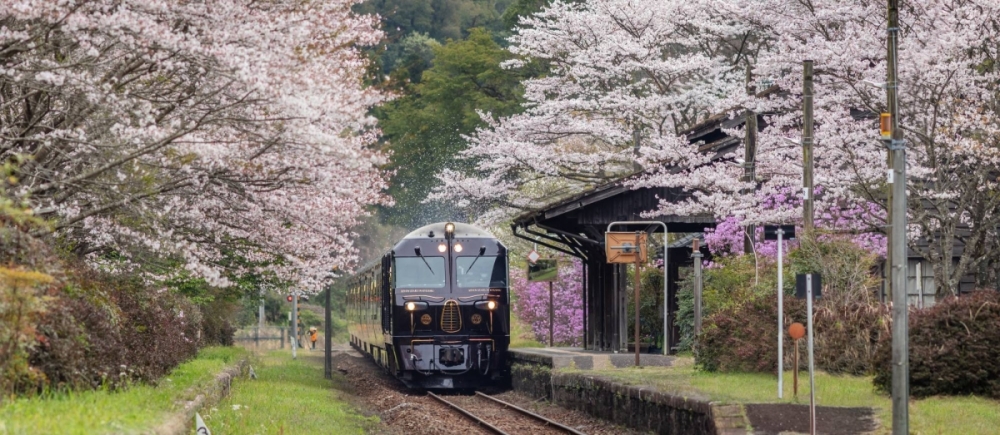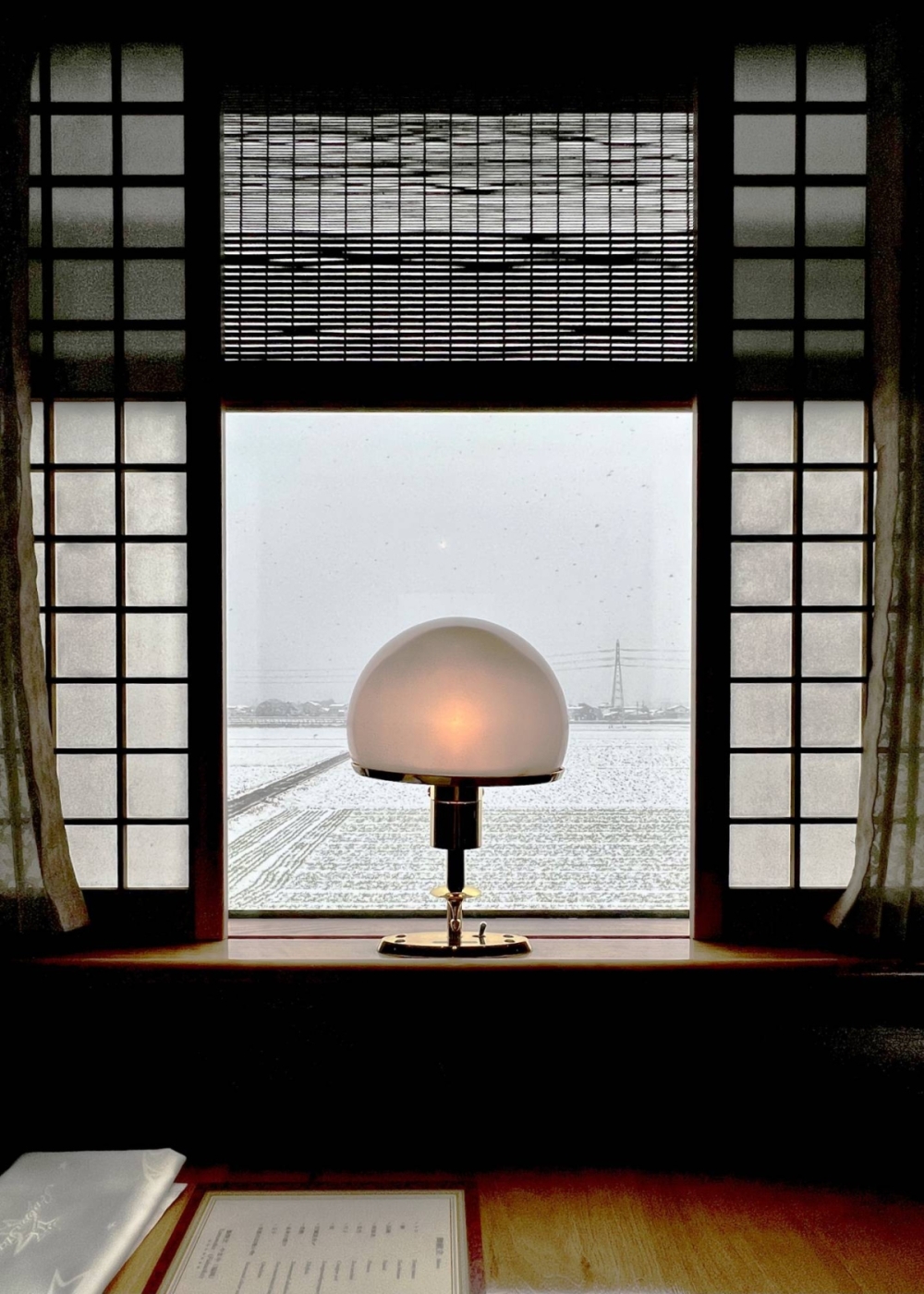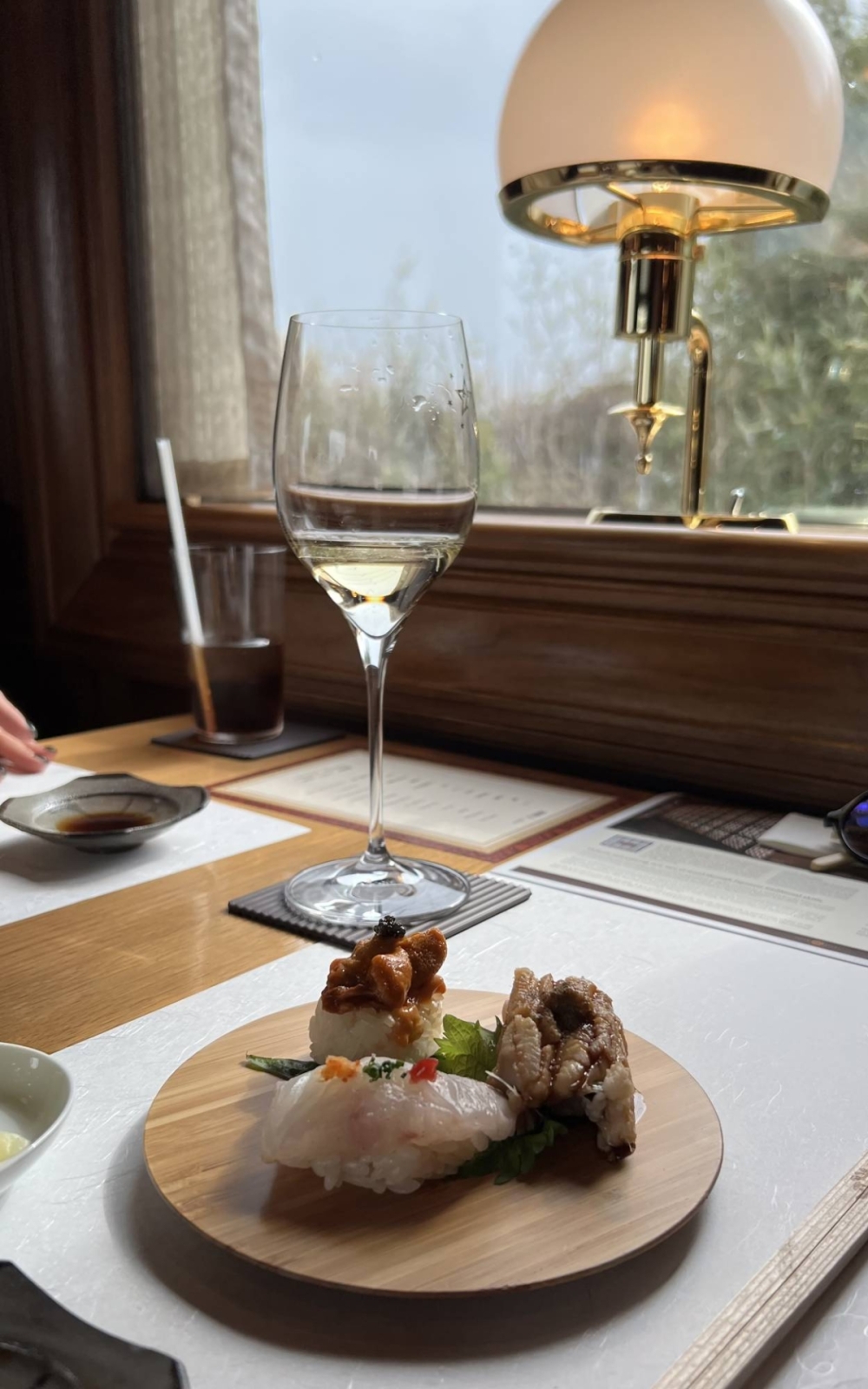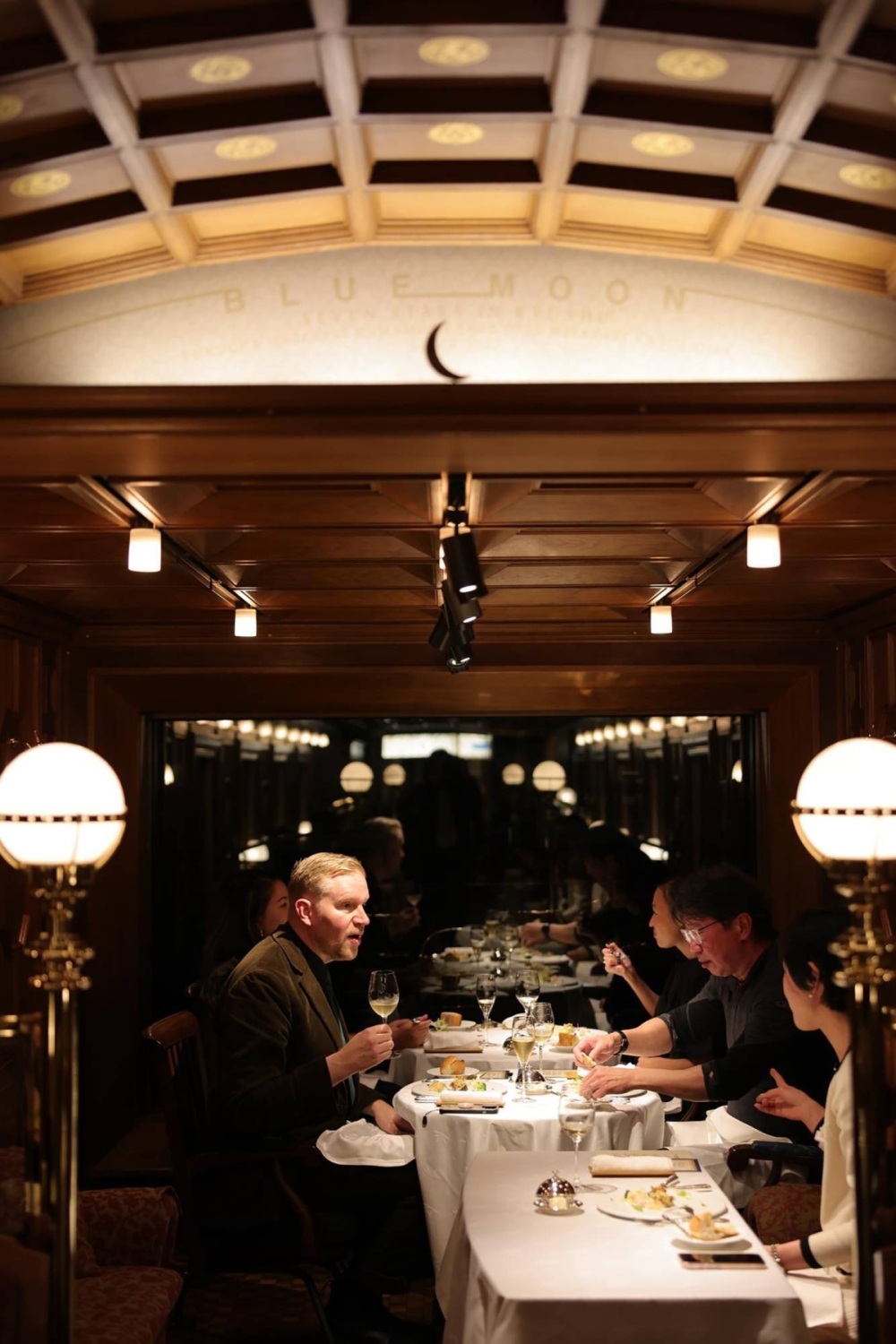Aboard Japan’s most luxurious train, the journey is the destination
The luxury Seven Stars in Kyushu train trades the hyper-efficiency of typical rail travel in Japan for a slower, more decadent version. | COURTESY OF SEVEN STARS IN KYUSHU
Luxury rail travel has always carried an air of nostalgia, a lingering connection to a time when the world moved at a slower, more deliberate pace. In Japan, where the shinkansen has redefined efficiency, there exists an anomaly — the Seven Stars in Kyushu, a train that moves not with speed but with intention.
Over two days and one night, I recently traveled aboard this wood-paneled, brass-adorned sleeper train, tracing a path through Kyushu’s varied landscapes, stopping in quiet coastal towns and alighting at preserved samurai districts. Unlike Japan’s high-speed alternatives, this train asks passengers to surrender to slowness, to observe the countryside not as a blur from a window but as an unfolding narrative.
The cost of this experience is prohibitive to most. The “cheapest” Seven Stars journey starts at around ¥680,000 per person in a double suite, while a deluxe suite for one person on the longest route at most reaches ¥2,770,000.
What’s more, the Seven Stars operates on a very limited schedule. Since its maiden voyage in 2013, the train has been running twice per week, departing Fukuoka’s Hakata Station for one-night, two-day journeys every Saturday and Sunday, and three-night, four-day trips every Tuesday and Friday. In total, the train completes approximately 80 journeys per year. And with just 10 suites, the Seven Stars accommodates a maximum of 20 passengers per trip — available primarily through a lottery system.
A trip aboard the Seven Stars is specifically curated to help travelers break free from a rushed mindset when traveling. | ERIK AUGUSTIN PALM
Most travelers fall into a certain demographic — wealthy retirees, couples celebrating milestones, well-heeled travelers seeking out curated experiences rather than spontaneity. Many are over 60, though for shorter journeys, guests in their 40s and 50s are not uncommon. Yoshihiro Shiojima, the train’s manager, describes them as people who value encounters as much as scenery.
“You will have time to reflect on your own life,” he says. “It can be an opportunity to discover or rediscover the charm of your partner. And there are new encounters, such as local people, crew members, staff members, chefs, artisans and guides.”
It’s not uncommon for passengers to be veterans of luxury rail travel. Shiojima confirms that a portion have previously ridden Japan’s other high-end sleeper trains, like the Twilight Express Mizukaze (running through western Honshu) and the Shiki-shima (running throughout eastern and northern Honshu). A number of passengers have also experienced the great international rail routes — the Venice Simplon-Orient-Express and the Eastern & Oriental Express.
But unlike those trains, which lean on glamour and theatricality, the Seven Stars cultivates something more subdued. It is not a train of grandeur so much as one of refinement, its luxury expressed through meticulous detail. The interiors are handcrafted with Kyushu materials — kumiko woodwork, ceramic tilework and lacquerware. The staff does not operate under a conventional service model but rather with an ethos that Shiojima is particularly proud of.
Spots on the luxury train are typically mainly available via a lottery system. | COURTESY OF SEVEN STARS IN KYUSHU
“What we do on this train is not ‘service’ — it is the same courtesy you give to your family or friends,” says Shiojima.
It’s a statement that might sound rehearsed, but on board, it feels genuine. Hospitality here doesn’t feel transactional (although, financially speaking, it of course very much is).
Simon Metcalfe, a 48-year-old from New Zealand working in tourism in Kyushu, has had the chance to ride the train repeatedly and experience how this kind of travel reshapes perception.
“Here, I’m able to take time away from my busy daily life to slow down and take in the scenery,” Metcalfe says. “And I have time to feel nature, which is often forgotten.”
The itinerary is partially structured around curated excursions, emphasizing cultural immersion rather than passive observation. In Akune, Kagoshima Prefecture, the train stops at Wakimoto Beach — a stretch of protected coastline where passengers are met by Yoshi Motowaki, a senior citizen who lived in the United States for years and now is a member of the Wakimoto Coast Sea Turtle and Snowy Plover Association. His organization maintains the 2.6-kilometer white sand beach, preserving its ecosystem while also ensuring it remains pristine for visitors and locals alike.
“Our organization ... is proud of the Seven Stars’ choice of Wakimoto Beach as one of the excursion spots, although this area has been somewhat of a hidden place as a scenic spot in Japan,” says Motowaki, 66. “The locals have known this beach since their childhood, and it wasn’t seen as remarkable. But once it was acknowledged as worthy of being seen by this authority, many realized the beach must be just that.”
Motowaki views the train’s presence as a validation of his organization’s work.
Meals aboard the Seven Stars are sometimes cooked by chefs who board for specific segments, like this lunch from Takuo Yamanaka, chef at Fukuoka's Sushi Yamanaka. | ERIK AUGUSTIN PALM
“The Seven Stars noticed ... that our activities are worth attention,” he says. “Now, our desire to protect and preserve nature is even stronger than before. We’re also in talks with the local government about how to preserve rare animals and the environment.”
The next morning, the train arrives in Usuki, Oita Prefecture, where passengers disembark for a guided walk through the town’s samurai quarter. Unlike the well-trodden historical districts of Kyoto or Kanazawa, Usuki retains a quieter, less commercialized atmosphere. The streets, lined with Edo Period (1603-1868) residences, feel almost untouched, and the highlight of the stop is an invitation into one of the preserved samurai homes for a traditional tea ceremony that echoes the overarching theme of the Seven Stars experience — mindfulness, presence and an appreciation for craft.
Back on the train, the Blue Moon restaurant and lounge car envelops guests in an atmosphere of timeless elegance, with rich wood paneling, soft lighting and expansive windows framing Kyushu’s landscapes. Chefs from Kyushu’s top establishments step on board to craft meals that showcase regional flavors: Takuo Yamanaka, an 84-year-old master from Fukuoka’s Sushi Yamanaka, presents a meticulous kaiseki (Japanese haute cuisine) Japanese lunch on the first day, balancing umami-rich seafood with delicate seasonal vegetables. For dinner, Takashi Tashiro from Kagoshima’s Belle France serves a refined Western-style multicourse menu, seamlessly blending French techniques with Kyushu ingredients.
As dinner unfolds in the lounge car, a live pianist and violinist provide a score to the meal, heightening the sense of ceremony. When the final course is cleared, the space transforms into an elegant late-night bar — on my journey, a magician appears at my table, effortlessly blending sleight-of-hand illusions into the rhythm of the evening.
The dining car aboard the Seven Stars exudes the typical wood-paneled look of the train's interior spaces. | HIROKAZU FUKUSHIMA
Before we roll into Fukuoka again, the train’s farewell event takes place in Blue Moon, where a short film plays, mixing preexisting footage with videos and photos documenting the excursions, the meals and the people we’ve met through our journey. Despite the opulent setting, it has the intimacy of family video time — the exact kind of atmosphere that Shiojima and his staff have been going for.
Some passengers watch the film quietly, immersed in reflections. Others exchange knowing smiles or laughs with people they’ve shared this fleeting but carefully composed world with. The pianist plays softly in the background, the clinking of glasses punctuates the air and the train hums beneath us, carrying us toward the end of the journey.
Some passengers will definitely return for another ride, a Seven Stars fan club, if you will. Others will step off the train and back into the habit of seeking other forms of exclusive travel — an approach where time is measured not in slow-gliding panoramas but in hurried completism.
But for all, the Seven Stars serves as a reminder that not all travel must be about efficiency. And sometimes, the most luxurious thing about a luxury train journey is simply time itself.
Travel and accommodation for this story were provided by JR Kyushu. No portion of this story was shared with any third party prior to publication.











